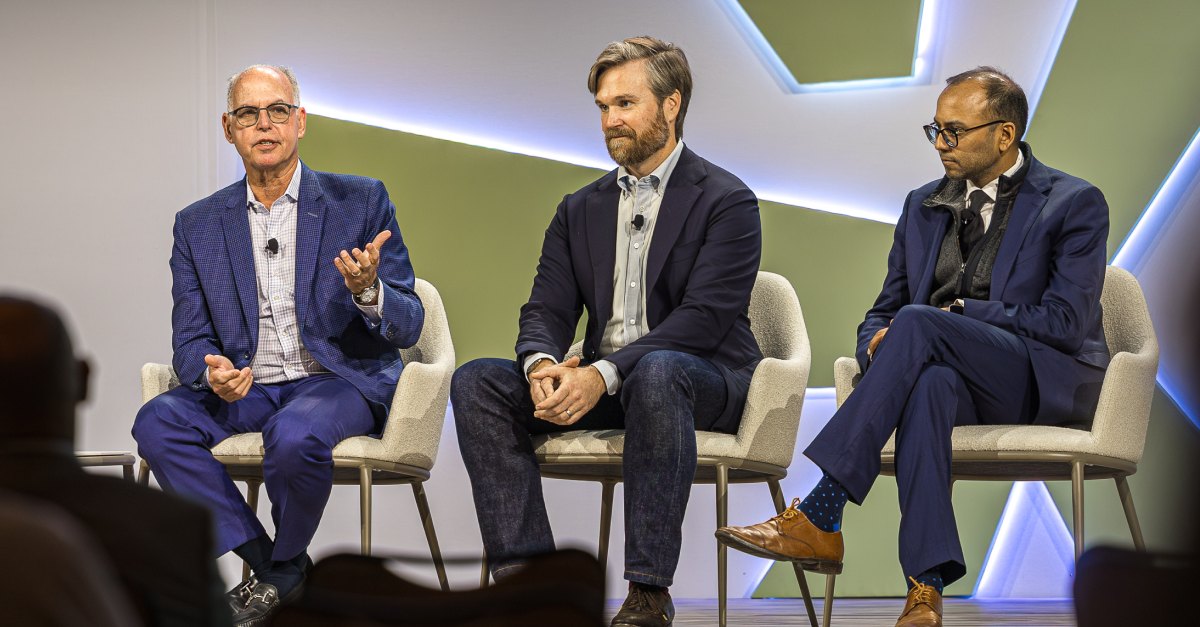In an era where technology is reshaping virtually every industry, conversational AI for healthcare has emerged as a promising solution to some longstanding challenges. Despite large financial investments and lengthy implementation timelines, chatbots often fall short of expectations, leading to patient leakage and additional work for already overburdened patient engagement teams and contact centers.
Today, more often than not, patients attempting to schedule through a chatbot are redirected to the call center or mobile application. Research shows that patients do not want to use the phone for these types of tasks, and ironically, many chatbots have been deployed specifically as a means to deflect calls from the contact center. What’s more, a staggering 82% of healthcare consumers said they would switch providers as a result of a bad experience.

Conversational AI offers a far more nuanced and responsive approach with the potential to enhance patient engagement and streamline operations.
What is conversational AI for healthcare?
Conversational AI for healthcare is far from just an upgraded chatbot. It's a sophisticated technology that leverages natural language processing (NLP), machine learning (ML), and deep contextual understanding to interact with patients in a manner that mimics human interaction. Unlike traditional chatbots, which often rely on pre-set scripts, conversational AI can understand and respond to increasingly complex queries, making it a more effective tool in healthcare settings.
The technology that makes conversational AI for healthcare possible is both robust and adaptable. NLP enables the system to analyze the structure and meaning of text, allowing it to comprehend user queries and engage in human-like dialogue. Machine learning algorithms enable the system to learn from interactions, adapting and improving its responses over time.

How does conversational AI work in healthcare?
When integrated with existing healthcare systems, like the electronic health record (EHR), customer relationship management (CRM) system, or practice management system, conversational AI is able to access relevant information to provide accurate and context-specific responses. These integrations, combined with the ability to understand and generate natural language, allow conversational AI to provide a more personalized and interactive experience, far surpassing the capabilities of traditional rule-based chatbots.
Conversational AI is not a one-size-fits-all solution for healthcare. It can be tailored to meet the unique needs and challenges of a patient population as well as individual healthcare providers. From language preferences to specific scheduling protocols, conversational AI can be customized to align with organizational goals and detailed provider requirements.
For example, a health system with a significant population of non-English speaking patients might enable support for dozens or even hundreds of languages within its conversational AI tool. This allows patients to seek and receive information in their native language, increases accessibility and engagement, and ultimately helps deliver better outcomes.
Among other use cases, conversational AI can help manage appointments, help patients locate providers based on detailed criteria, retrieve basic billing information, and more.
The benefits of conversational AI for healthcare
The benefits are many, particularly when conversational AI is viewed as a strategic tool for enhancing patient engagement and satisfaction. By its very nature, the technology enables real-time, personalized interactions, fostering a more patient-centric approach.
Additional benefits include:
- Expanded access to care and services. With a conversational AI tool, patients have the ability to get support and information regardless of the time of day or their geography. Conversational AI tools don’t take sick days or vacations and typically have availability close to 24 hours per day, 365 days per year.
- Efficiency gains. By automating routine tasks like finding a doctor, refilling a prescription, or accessing information on insurance claims, conversational AI tools allow healthcare professionals to focus on more complex cases and value-added activities.
- True call deflection. A robust conversational AI solution can relieve the burden placed on contact center agents by handling common questions like the location, contact information, or operating hours of a specific provider or specialist.
- A deeper understanding of patient needs. By their nature, conversational AI solutions learn from the queries to which they respond. By recognizing patterns and analyzing common patient challenges, these tools can surface valuable insights that can be used to inform changes to care delivery or guide additional digital optimizations.
Considerations for implementing conversational AI for healthcare
Careful planning and close collaboration with your IT team should be the norm when working to implement any AI technology for healthcare. More than likely, there are existing governance standards that have been established and should be applied to the deployment of conversational AI.
“I don’t believe, at all, that a good governance program is a hindrance to innovation,” said Ilana Golbin, Director and Responsible AI Lead at PwC US. “I think it’s an accelerant for innovation.”
To that end, any conversational AI solution should provide the ability to customize, configure, deploy, and iterate at a rapid pace. Gone are the days of complex chatbot configurations that require manual updates to massive decision trees for any change, large or small. Leading conversational AI tools can be deployed in days or weeks, not months or even years like traditional chatbots.
Finally, patient safety and security are non-negotiable. At a minimum, ensure any conversational AI solution adheres to stringent privacy regulations, such as the Health Insurance Portability and Accountability Act (HIPAA), safeguarding sensitive patient information and maintaining trust. Take things a step further by ensuring that any vendor in the consideration mix is HITRUST certified.
What comes next for conversational AI for healthcare?
Imagine a healthcare solution where conversational AI doesn’t just answer queries but anticipates patient needs and seamlessly integrates with your existing systems to provide real-time data analytics. By applying large language models (LLMs), which are powering tools like OpenAI’s ChatGPT, and generative AI principles to conversational AI, you’re not just upgrading a patient engagement tool; you’re installing a powerful, adaptive assistant that can revolutionize patient access and operational efficiency. This isn’t just about automating routine tasks; it’s about elevating the entire healthcare experience, making it more personalized, efficient, and data-driven than ever before.
Traditional chatbots can handle basic FAQs; conversational AI with LLMs and generative AI can engage in nuanced conversations and adapt to individual patient profiles. This is not a marginal improvement, it’s a paradigm shift. It’s the difference between having a tool and having a partner that evolves with your organization, continuously learning and improving to meet the changing demands and challenges of modern healthcare.










